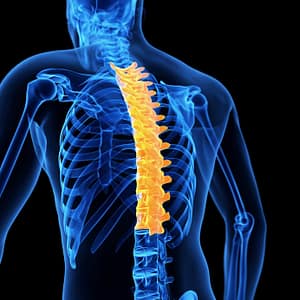Upper Back Pain – It’s just Different
 The thoracic spine is complexly unique to other areas of the spine, making upper back pain different. Your neck and lower back tend to have greater range of motion and experience greater degeneration during the aging process do to mobility. Underlying conditions can also be the cause of upper back pain; but be less likely to have surgical solution because of the thoracic spine’s proximity to vital organs.
The thoracic spine is complexly unique to other areas of the spine, making upper back pain different. Your neck and lower back tend to have greater range of motion and experience greater degeneration during the aging process do to mobility. Underlying conditions can also be the cause of upper back pain; but be less likely to have surgical solution because of the thoracic spine’s proximity to vital organs.
Back pain regardless of where it originates in the spine can exacerbate enough to decrease your active lifestyle. In some ways upper back pain can differ from cervical pain pain and lower back pain.
The occurrence of upper back pain is less common than other forms of back pain. Once possible reason or the rarity of upper back pain is it’s connection to the ribcage, which provides added support to the spine. Your neck and lower back also have greater range of motion in comparison to the upper back, which adds to degeneration based on movement and age.
Teenagers are also more likely to experience upper back problems than other age demographics. One possible reason for this is teenagers are more likely to use backpacks daily. And over the years, the weight of backpacks has increased with textbook size; as well as the improper wearing of backpacks by adolescents could also add to the cause of pain. “The same study also noted the older adolescents were at increases risk for thoracic spine pain compared to younger adolescents.” Rob D. Dickerman, DO, PhD, 3 Ways Upper Back Pain Is Different
Back pain can greatly impede your lifestyle regardless of where in the spine it originates: the neck, the thoracic spine, or the lower back. Small differences from the neck and the lower back make upper back pain a unique experience.

